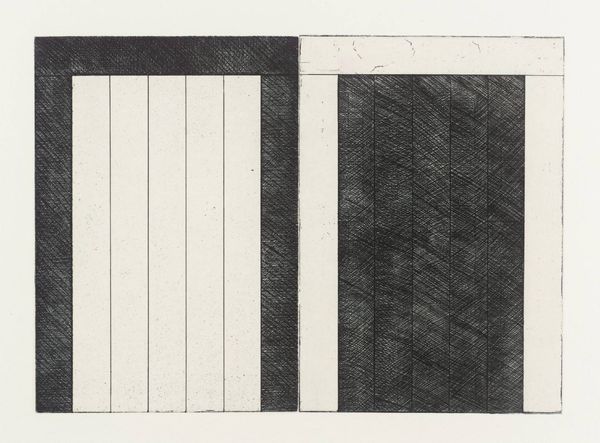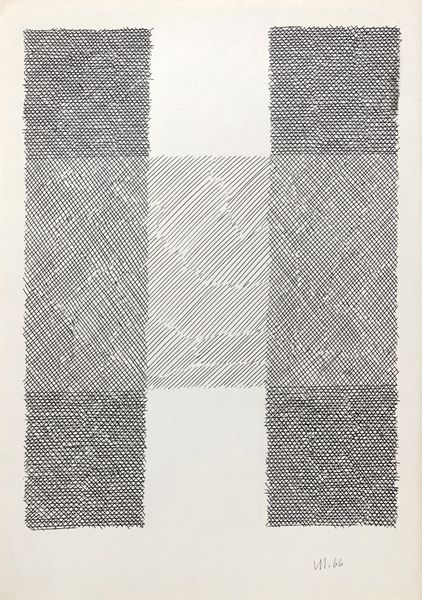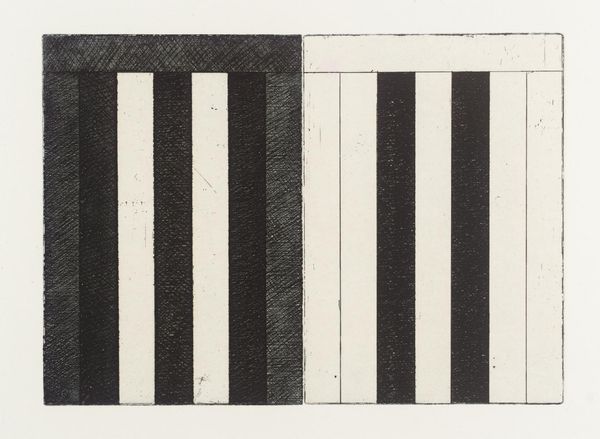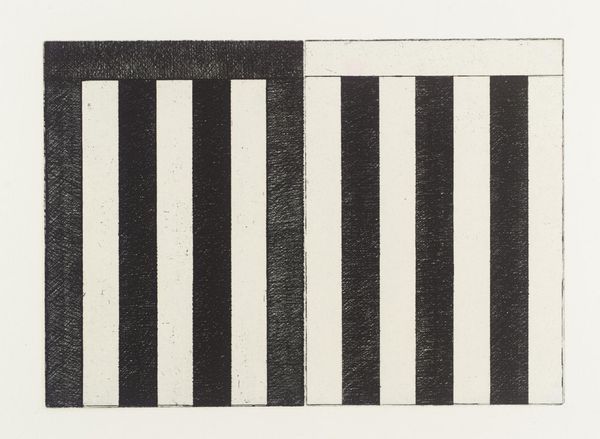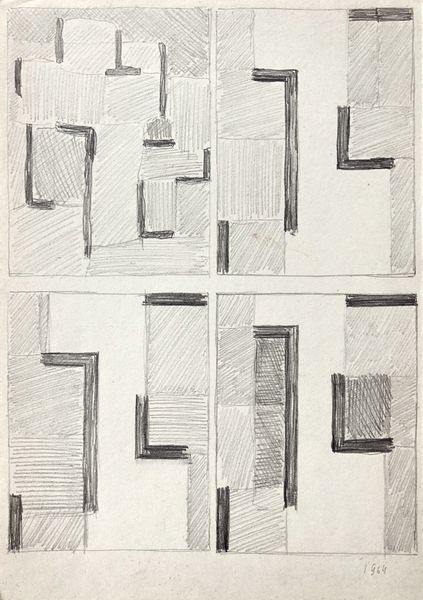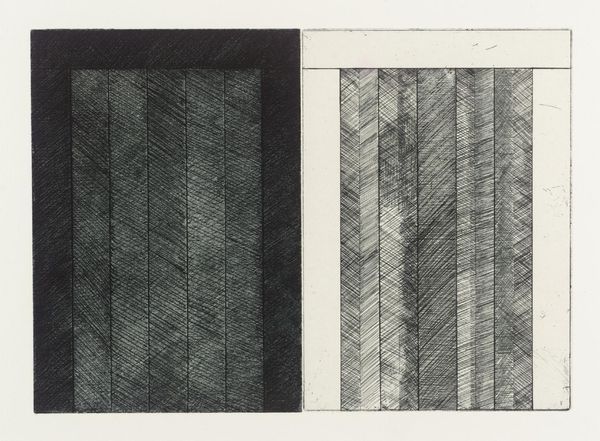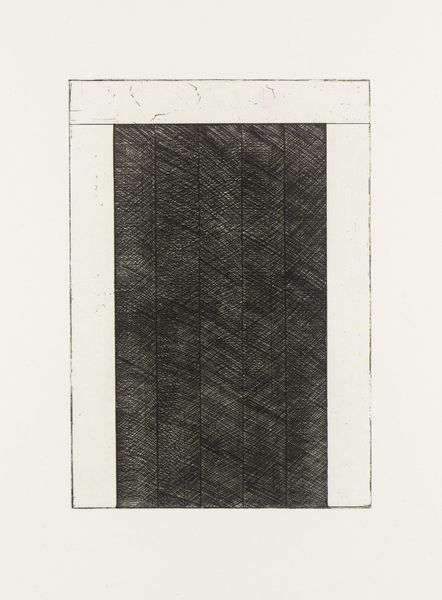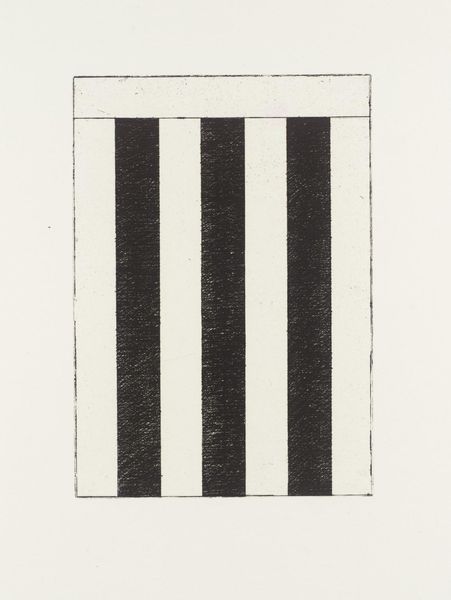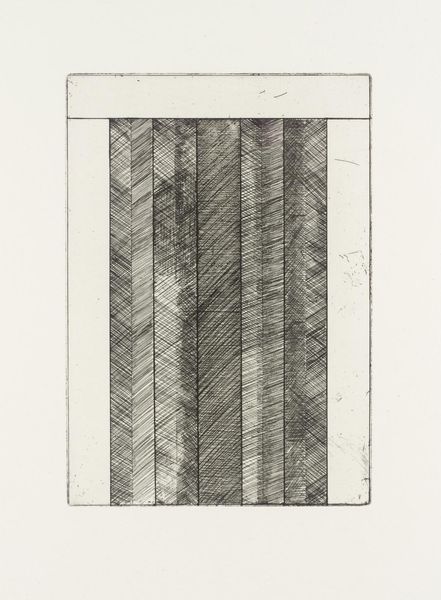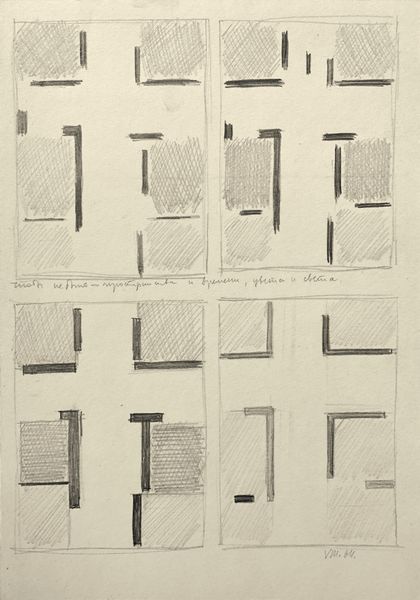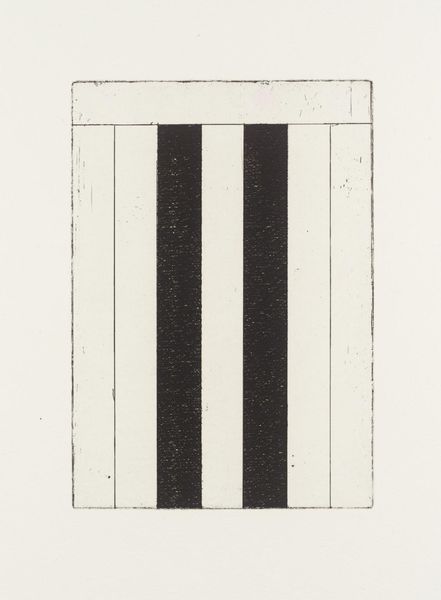
drawing, paper, ink
#
drawing
#
paper
#
ink
#
rectangle
#
geometric
#
geometric-abstraction
#
abstraction
#
line
#
modernism
Copyright: Hryhorii Havrylenko,Fair Use
Curator: It feels like a doorway, almost two, standing slightly apart, perhaps unsure. Editor: Well, let’s contextualize that initial feeling. We’re looking at "Two Abstract Compositions" by Hryhorii Havrylenko, made in 1966. It's ink on paper, a drawing of paired geometric shapes, and, I have to say, rather striking in its simplicity. Curator: Indeed. The use of hatched lines to create varied tonal density grants the two near identical rectangles the look of classical pillars. They call forth something old, some sacred edifice. Do you get that? Editor: Sacred? Interesting. What strikes me first is the handwork involved. Each of those thousands of little lines meticulously rendered to suggest volume and shadow. One has to wonder about the physical and temporal commitment implied here. Curator: The meticulous process mirrors ritual, surely? The repetition, the dedicated execution, implies something beyond pure aesthetics. Perhaps a meditation? The rectangle, in various cultures, holds significance as representative of earth, stability, of a grounded existence. Editor: Or simply, rectangles were cheap and available, perhaps cast-off material being upcycled into a medium for artmaking? Seriously though, considering the social and economic conditions of 1966 and Havrylenko’s location, what did it mean to be able to source paper and ink? Was this work commissioned or made for personal exploration? I mean, it really prompts these questions. Curator: Of course, your angle considers the more practical element. I see them not merely as rectangles, but archetypes of shelter, resonating deep within our collective consciousness. The white spaces especially feel symbolic – voids where the possibilities of meaning emerge and shift, no? Editor: Maybe. Or maybe the artist had a limited amount of ink! Either way, what's clear is how powerfully such a simple material interaction—ink on paper—can yield such diverse, suggestive forms, speaking to the artist’s, and now our, daily conditions of production. Curator: Seeing through that production also gives pause, offering a reflection that even in simple geometry the soul seeks itself reflected. Thank you, I appreciate that. Editor: Absolutely. Material realities and inner states—they're always interwoven. Thank you!
Comments
No comments
Be the first to comment and join the conversation on the ultimate creative platform.

